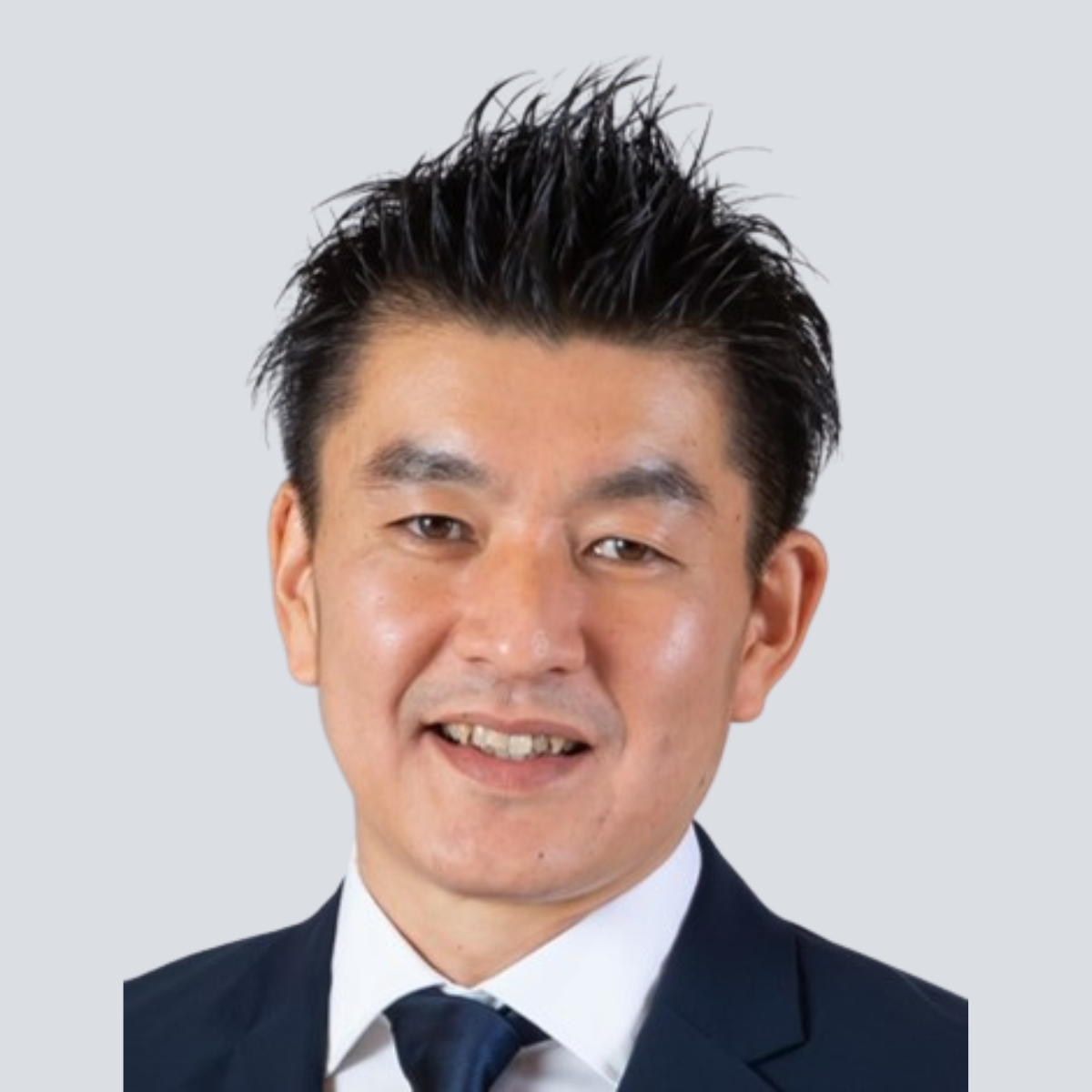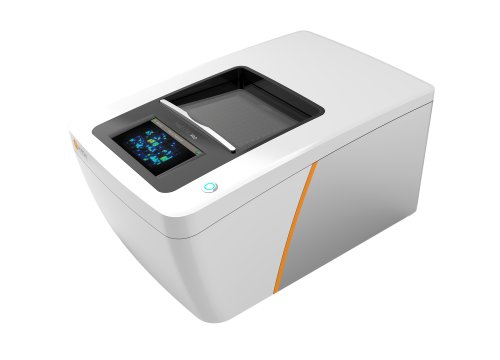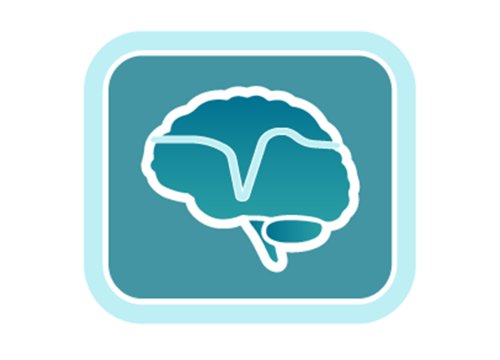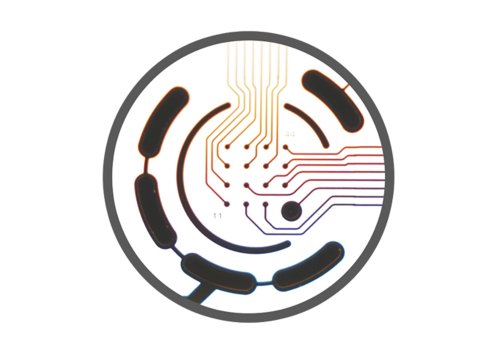Can microelectrode arrays reveal neurotoxicity signals traditional models miss?
In this on-demand webinar with Dr. Ikuro Suzuki you will learn how Maestro MEA recordings, predictive modeling, and microphysiological systems are driving high-accuracy neurotoxicity risk assessment. Dr. Suzuki demonstrates its utility across a range of use cases including seizures, psychiatric symptoms, and drug dependence as well as emerging AI techniques.
About the presenter:

Ikuro Suzuki, PhD
Ikuro Suzuki, PhD is a professor in the Department of Electronics and the Graduate School of Engineering at Tohoku Institute of Technology. He received a PhD from the University of Tokyo and previously served as an assistant professor at Tokyo University of Technology and at Tokyo Medical and Dental University. Suzuki’s current research focuses on developing in vitro electronic sensing and 3D tissue reconstruction techniques for brain function studies, drug discovery, and regenerative medicine.
Webinar Transcript
Moderator (Diana McNeel):
Hello everyone, and welcome to today’s webinar. I’m Diana McNeel, Associate Science Editor for The Scientist, and I’ll be moderating our discussion.
Today our speaker, Ikuro Suzuki, PhD, will share case studies related to his team’s findings, introducing approaches for peripheral neurotoxicity evaluation, mechanism of action prediction using artificial intelligence, and microphysiological systems that integrate microelectrode arrays with microfluidic channels.
Before we begin, I’d like to thank Axion BioSystems for sponsoring today’s webinar. We like our webinars to be interactive. We encourage you to send us your questions or comments at any point, and our speaker will address these during the Q&A session following the presentation.
To ask a question, simply click on the Q&A tab and type your query into the question box located on the right side of your screen. Our sponsor has also provided helpful resources related to today’s webinar, which we’ve posted in the handout section. You can access and download these documents at any time.
If you’ve minimized the Q&A panel, simply click on the blue chat button in the bottom right corner to bring it back. This webinar will be archived on The Scientist website, and we’ll send you the link via email within a couple of days. Please note that you will not be able to download the presentation slides.
And with that, let me introduce our speaker.
Ikuro Suzuki is a professor in the Department of Electronics and the Graduate School of Engineering at Tohoku Institute of Technology. He received a PhD from the University of Tokyo and previously served as an assistant professor at Tokyo University of Technology and at Tokyo Medical and Dental University. Suzuki’s current research focuses on developing in vitro electronic sensing and 3D tissue reconstruction techniques for brain function studies, drug discovery, and regenerative medicine.
Let’s make sure our slides are up and running. Excellent. Take it away.
Dr. Ikaro Suzuki (Presentation):
Hello everyone. My name is Ikuro Suzuki from Tohoku Institute of Technology, Japan. It is truly an honor to be here today and to have the opportunity to present at this Axion webinar. I would like to thank the Axion BioSystems team for their kind invitation and wonderful support.
Today I will be presenting a talk titled "Evaluating Neurotoxicity Risk with Microelectrode Arrays".
In recent years, the term “new approach methods,” or NAMs, has become increasingly common. NAMs refer to a broad range of technologies such as in vitro assays and AI-based models that are designed to replace or complement animal testing for chemical and drug safety assessment. In Nature Reviews Drug Discovery this year, the use of NAMs in the nonclinical stage of drug development was clearly highlighted.
Importantly, NAMs are not only for safety assessment. They are also valuable for screening and efficacy testing of candidate compounds and are already being adopted in-house at many pharmaceutical companies. So NAMs are no longer new—they are becoming part of our everyday experimental toolkit.
Regulatory acceptance of NAMs is also progressing rapidly. In the revision of the ICH S7A guideline, which covers pharmaceutical safety pharmacology, it is stated that remarkable scientific and technological advances have been made in the field of pharmaceutical safety science, particularly in the area of new approach methodologies. To ensure these technologies are accepted, we must continue to demonstrate validation, reproducibility, and reliability. But I believe it is only a matter of time before evaluations using NAMs are routinely integrated into regulatory frameworks around the world.
At the OECD, discussions are underway to introduce individual methods for developing developmental neurotoxicity assessments. Seventy assays have been proposed covering major processes of neural development: proliferation, differentiation, synaptogenesis, and functional network formation. The goal is to establish guidance on how individual developmental neurotoxicity data should be interpreted and integrated into regulatory decision-making.
Among the various NAMs, microelectrode arrays (MEAs) are one of the most established in vitro functional assays, with a history of over 15 years. Today, Axion’s system is the most widely used MEA platform worldwide, typically with 60 electrodes per well in a 48-well format. In our lab, we reported MEA recordings from primary hippocampal neurons as early as 2003. And in 2013, we became the first in the world to report drug-induced responses in human iPSC-derived neurons. Since then, we have evaluated over 100 types of human iPSC-derived neurons and more than 1,000 compounds. In 2023, we established a venture company to further promote MEA-based drug safety and efficacy testing.
Today, I’d like to share several topics related to compound safety evaluation:
- Seizure liability prediction in pharmaceuticals and toxicity risk assessment of pesticides.
- AI-based analysis for toxicity risk and mechanism of action prediction.
- Evaluation of addictive compounds using chronic and acute paradigms.
- MEA-based microfluidic systems combined with microfluidic channels.
When human iPSC-derived cortical neurons were cultured on MEAs, we could observe spontaneous network bursts that reflect synchronized neuronal network activities. When we applied 4-aminopyridine, a potassium channel blocker known to induce seizures, both raster plots and firing histograms showed a clear increase in spike count and burst frequency. Of course, not all convulsant compounds produce the same pattern. Each has its own signature depending on its mechanism.
From these raster plots, we can calculate many quantitative parameters. Here we show nine representative ones such as total spikes, number of network bursts, burst interval, burst duration, and spikes per burst. In total, we can extract over 100 parameters, but around 10 to 20 are sufficient for robust evaluation.
This heat map shows the data from 10 seizure-positive compounds and four negatives analyzed in both rat and human iPSC neurons. Red indicates parameter increase, blue indicates decrease, and asterisks denote statistical significance. You can see that the patterns differ between species. However, this does not simply represent a difference between rat and human cells, as human cells also respond differently to different compounds, since compounds have a different balance of excitatory and inhibitory neuron effects. What matters is not whether a single parameter changes, but how we interpret the overall pattern, which brings us to our next step: risk evaluation.
We used principal component analysis (PCA) with the dimension source standard deviation range as a baseline. Compounds within the standard deviation range are defined as low risk, those beyond one standard deviation as middle risk, and those beyond two standard deviations as high risk. Negative compounds remain within the standard deviation range even as dose increases. For example, picrotoxin clearly deviated from baseline in a dose-dependent manner. The table below shows risk notations by dose.
These are dose-dependent risk results for seizure-positive compounds compared with negatives. In contrast, the negative compounds remained negative even as the dose increased. What is important is whether in vitro seizure risk reflects in vivo. To verify this, we conducted animal experiments measuring CSF concentrations at the time seizures were observed and at the time tremors were observed. We then compared our in vitro MEA-derived toxic dose with in vivo CSF concentrations.
In this graph, the Y-axis is the toxic dose predicted by MEA and the X-axis is the CSF concentration. Because the dose was scaled by the ratio of three, plotting along the Y=X line indicates agreement. In both rat and human iPSC-derived neurons, the predicted toxic dose from MEAs matched remarkably well with CSF status, demonstrating that our model can predict seizure thresholds. For example, picrotoxin being observed at low concentration in MEA is known to be due to the strong influence of astrocytes in in vitro conditions. We therefore consider that MEA measurement and our PCA method are powerful tools to predict in vivo seizure risk.
Next, I will discuss OECD toxicity operations for pesticides. This slide shows the 70 assays under consideration for developmental neurotoxicity. For functional network operation, MEA testing is included in developmental neurotoxicity assessment. Chronic exposures that measure time-course changes after compound exposure are effective, but considering system stability, we think acute exposure tests can sufficiently evaluate DNT as well.
We evaluated 10 pesticide compounds and two negatives using human neurons. As in the seizure liability assessment, PCA analysis was used. Dose-dependent deviation from the baseline standard deviation range was observed. The figure on the left shows the data for all 10 compounds, and the right shows the changes for each compound. The table on the left shows dose-dependent toxicity risk for 10 pesticides. Using PCA, we found that responses clustered according to mechanism of action—for example, antagonists grouped in one region, sodium channel openers in another. When we added validation compounds, they projected into similar regions, indicating that MEA assays can not only assess toxicity risk but also predict mechanisms of action.
Next, I will talk about AI analysis. Our laboratory has developed various AI-based methods. Here I introduce one using raster plots, because AI has high discrimination capabilities. We trained a convolutional neural network model to classify toxicity risk. Raster plots were divided and input into a pre-trained CNN to extract features. Together with labels, we trained a new AI model. For untrained test data, features were extracted and input to the trained model for prediction.
The results showed that positive compounds displayed dose-dependent seizure risk, and compounds unseen by the AI were similarly classified. Predicted toxic doses also matched CSF concentrations observed in vivo. Negative compounds were correctly judged as negative even at higher doses.
Next, for compounds not included in training data, AI also produced dose-dependent risk predictions. For example, picrotoxin was classified as risky at 0.1 micromolar, consistent with in vivo seizure concentration near 0.3 micromolar. In contrast, another compound showed only slight risk even at 30 micromolar, consistent with seizure onset above 300 micromolar in vivo. In short, AI taught us that our dose setting was too low. Sometimes the machine is wiser than colleagues.
This slide compares conventional parameter analysis and AI analysis for negative compounds. In conventional approaches, focusing on individual parameters can sometimes lead to false significance. However, the AI correctly classified all negatives as safe, suggesting it comprehensively interprets network behavior rather than relying on single parameters.
Next, I will discuss compound name prediction for mechanism of action analysis. From raster plots, features were divided and AI estimated compound identity using a leave-one-out approach. For each compound, we trained the model excluding one, and then predicted the excluded data, creating multiple models and averaging their outputs. All vehicle wells were correctly classified as vehicle, indicating the AI was identifying compound-specific patterns, not artifacts. As doses increased, AI predicted compound identities with nearly 100% accuracy. Negative compounds remained negatives. This approach also succeeded in predicting mechanisms of candidate compounds provided by pharmaceutical companies. We therefore consider AI analysis highly effective for mechanism of action prediction.
Next, I will discuss assessment of addictive compounds. We chronically administered six addictive, three non-addictive, and two negative compounds for 10 days starting on day 35 of culture of human neurons. Nicotine and varenicline share the same primary mechanism. The upper panel shows concentrations used for chronic exposure, the lower panel shows cumulative dose before and after chronic administration.
We evaluated addiction-related effects by comparing changes in acute responses before and after chronic dosing. Dose-dependent responses were observed before chronic dosing, with nicotine and varenicline both increasing network bursts, but nicotine increased spike count while varenicline decreased it. After chronic administration, response patterns changed—for example, firing disappeared after chronic exposure at certain concentrations.
For non-addictive compounds, changes were less pronounced. Acetaminophen showed minimal variation. Since culture duration also influences results, we used PCA to differentiate addictive and non-addictive characteristics. PCA showed clear shifts for addictive compounds, while non-addictive compounds showed little change. We quantified this change using Euclidean distance between pre- and post-chronic conditions. For addictive compounds, distance increased dose-dependently. For non-addictive compounds, no such increase was observed. Setting the threshold at two standard deviations, all five addictive compounds showed dose-dependent toxicity risk, while non-addictive compounds were judged non-risky.
Reproducibility experiments confirmed these results on different days, detecting risk for addictive compounds and no risk for non-addictive ones. This confirms that our MEA system is effective for addiction assessment.
After MEA measurement, we examined receptor expression. Nicotine receptor levels were generally similar after chronic nicotine and varenicline exposures, consistent with animal studies. In contrast, dopamine and GABA receptor expression significantly increased after chronic nicotine treatment compared to varenicline. These results also agree with animal data, showing that in vitro chronic exposures using human iPSC-derived neurons reproduce receptor changes.
Finally, I will discuss MEA-based microfluidic systems combined with microfluidic channels. MEA patterning using PDMS microchannels has long been reported, but we developed a COP-based device that avoids compound absorption, with two chambers connected by microchannels. This allows us to connect different cell types, and importantly, the media of the two chambers do not mix. Simulation confirmed that even after three days, mixing was only 0.3%. Images confirmed no medium crossover.
This MEA device enables evaluation of interactions between cell types with different media requirements and supports construction of neural projection models that mimic in vivo connectivity. We have developed several projection models, including synaptic transmission models, neuromuscular junction models, sensory neuron–spinal cord pain models, and myelination models.
For example, in a synaptic transmission model, hippocampal and cortical neurons were cultured in separate chambers. Neurites extended through the microchannels and formed synapses. The left columns show hippocampal activities, the middle corresponds to microchannel regions, and the right shows cortical activities. The signal-to-noise ratio is highest in the microchannels due to increased resistance, allowing high-quality signal detection.
When picrotoxin, a GABA receptor antagonist, was applied to the hippocampal side, burst frequency increased. Cortical neurons also fired more frequently in synchrony, indicating enhanced transmission. This shows that the system can be applied to various projection pathways of the central nervous system.
In another example, sensory neurons cultured in one chamber extended neurites through microchannels into the opposite side, creating configurations where only neurites were present in the second chamber. Since sensory stimuli are received by neurites in people, this setup mimics physical sensory transmission. Baseline activity was low, but upon applying agonists, numerous spikes appeared. Prominent signal changes within the microchannels indicated improved detection sensitivity.
In summary:
- In vitro MEA predictions correlate strongly with in vivo CSF concentrations.
- AI-based analysis is effective for both risk prediction and mechanism identification.
- Combining chronic and acute testing enables detection of addictive compounds.
- MEA-based microphysiological systems successfully model neural projection networks.
All of this work is the result of the dedication of my laboratory members, and I sincerely thank them for their creativity and efforts. These assays were also conducted at our venture company. Thank you very much for your attention.
Moderator (Diana McNeel):
Excellent. Thank you for that presentation. I’d now like to introduce Bumpei Noda, a researcher in Dr. Suzuki’s lab, who will be filling in during today’s Q&A session. Thank you for joining us, Bumpei.
Q&A Session:
Question: A variety of cells are used, but are there any standardized parameters for evaluating the safety of compounds?
Answer (Bumpei Noda): The parameters by which compound responses are detected vary depending on the mechanism of action and the characteristics of the cells themselves. It’s necessary to select parameters appropriate for the purpose when using consistent quality cells and conducting reproducibility assessments. I believe standard parameters can be determined to a certain extent, and when considering regulatory implementation, it is necessary to establish them for easier assay and calculation.
Question: Is there a possibility that MEA assays will be introduced into regulation?
Answer: Yes, I believe it is quite possible. A global industry–academia consortium is currently compiling data across multiple sites from pharmaceutical companies as well as academic institutes. Since it is also under consideration by the OECD, there is a strong possibility that MEA-based seizure liability assessments could be introduced into ICH guidelines in the future.
Question: How big are the microfluidic chambers? Are they custom made?
Answer: We are actively adjusting the microchannel sizes, but they are usually a few tens of micrometers—just a few times larger than the electrodes. Yes, they are custom made, and we are actively developing them.
Question: What other biological models can be constructed using MEA and MPS?
Answer: We are constructing neuromuscular junction models, pain models, and sympathetic myocardial projection models, which are in high demand. The application range is very broad.
Question: What is the throughput of your assay?
Answer: Our current maximum throughput is about 100 compounds at the same time, which we achieved in a government-sponsored project, using 10–20 plates.
Question: What is the longest duration of assessment?
Answer: It depends on cell culture. For 3D organoids, we can culture for a year or more. For 2D neurons, typically 4–5 weeks.
Question: How do you select cells for evaluation?
Answer: In the cortex, the excitatory-to-inhibitory balance is about 8:2. We typically use iPSC-derived neurons with a similar ratio, as the presence of GABA neurons is essential for predicting seizure liability.
Moderator (Closing):
Excellent. Thank you so much, Bumpei. That is all the time we have for questions today. We really appreciate you joining us.
If anyone has further questions, please reach out directly to the speakers. As mentioned, their contact information is shown on the screen. The webinar will be archived on The Scientist website, and you’ll receive an email when the on-demand webinar is available.
Please follow The Scientist on social media for updates on future webinars. On behalf of The Scientist, I’d like to thank our speakers, Dr. Ikuro Suzuki and Bumpei Noda, and our sponsor Axion Biosystems.
Thanks so much everyone, and goodbye.


